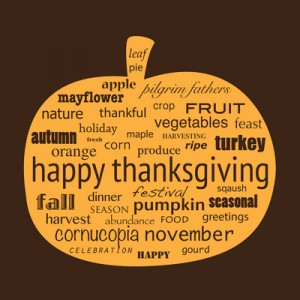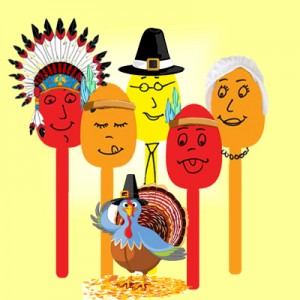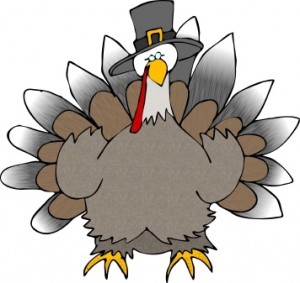 Turkey, the centerpiece of most Thanksgiving meals, is a low in fat and high in protein nutritonal star. A 3 and 1/2 ounce serving is about the size and thickness of a new deck of cards. The fat and calorie content varies because white meat has less fat and fewer calories than the dark meat and skin.
Turkey, the centerpiece of most Thanksgiving meals, is a low in fat and high in protein nutritonal star. A 3 and 1/2 ounce serving is about the size and thickness of a new deck of cards. The fat and calorie content varies because white meat has less fat and fewer calories than the dark meat and skin.
Calories in a 3 and 1/2 ounce serving (from a whole roasted turkey):
- Breast with skin: 194 calories; 8g fat; 29g protein
- Breast without skin: 161 calories; 4g fat; 30g protein
- Wing with skin: 238 calories; 13g fat; 27g protein
- Leg with skin: 213 calories; 11g fat; 28g protein
- Dark meat with skin: 232 calories; 13g fat; 27g protein
- Dark meat without skin: 192 calories; 8g fat; 28g protein
- Skin only: 482 calories; 44g fat; 19g protein
Once The Turkey Is Cooked, Does It Matter How Long It Stays Unrefrigerated?
Yes, yes, yes! According to the Centers for Disease Control the number of reported cases of food borne illness (food poisoning) increases during the holiday season. Food shouldn’t be left out for more than two hours.
If you’re saving turkey leftovers, remove all of the stuffing from inside the turkey, cut the turkey meat off the bone, and refrigerate or freeze all of the leftovers.
The Basic Rules For Leftovers
According to the March 2010 edition of the Nutrition Action Healthletter (Center for Science in the Public Interest) the mantra is:
2 Hours–2 Inches–4 Days
- 2 Hours from oven to refrigerator: Refrigerate or freeze your leftovers within 2 hours of cooking. Throw them away if they are out longer than that.
- 2 Inches thick to cool it quick: Store your food at a shallow depth–about 2 inches–to speed chilling.
- 4 Days in the refrigerator–otherwise freeze it: Use your leftovers that are stored in the fridge within 4 days. The exceptions are stuffing and gravy.They should be used within 2 days. Reheat solid leftovers to 165 degrees F and liquid leftovers to a rolling boil. Toss what you don’t finish.
How Long Can Leftover Turkey Stay In The Freezer?
Frozen leftover turkey, stuffing, and gravy should be used within one month. To freeze leftovers, package them properly using freezer wrap or freezer containers. Use heavy duty aluminum foil, freezer paper, or freezer bags for best results and don’t leave any air space. Squeeze the excess air from the freezer bags and fill rigid freezer containers to the top with dry food. Without proper packaging, circulating air in the freezer can create freezer burn – those white dried-out patches on the surface of food that make it tough and tasteless. Leave a one-inch head space in containers with liquid and half an inch in containers filled with semi-solids.



